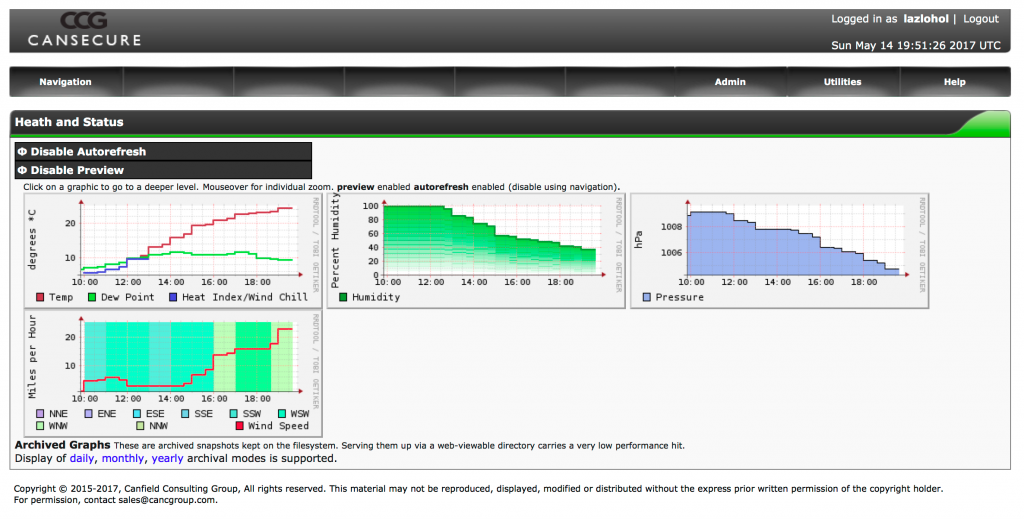Phen as a NOC (PaaN)
Phen, PaaN, and the entire package of CCG Software products are designed to provide dynamic cyber defense services.
The financial cost of cybersecurity staff, or even a single cybersecurity expert, can cripple small and large enterprises in wages, benefits, continuing education, etc.
Cybersecurity staff go home at the end of the day, use the bathroom, take coffee and lunch breaks, and sleep at night.
Phen operates 24/7.
Customers with mission-critical data transport need heavily rely on a carrier’s ability to maintain continuous network services, even in the event of a disaster scenario at their Network Operations Center (NOC).
PaaN integrates into any infrastructure, assisting and extending the capabilities of in-house staff.
Detailed below is the power of Phen as a NOC facilitator.
Traditional NOC Support Breakdown
| Tier I personnel are the starting point of customer support. NOCs are staffed by Tier I personnel who field initial customer reports of network outages, breaches, or outright failures. Tier II personnel are the next step, providing affected customers with updates and representing an estimated 50% of the NOC team. Phen provides a superior, upgraded alternative to Tier II tasking. Simply put, Phen outperforms Tier II personnel, resulting in an immediate and long-term Return on Investment (ROI). Tier III personnel manage all escalations on critical network outages. |
New Capabilities are available from CCG now.
- Placing Phen inside your NOC support system takes your operation into the future, working independently of and with your current support staff.
The Approach:
- Tier III provides required, stable personal for the foreseeable future.
- Phen collapses Tier I and Tier II into a single layer, requiring fewer personnel than the original Tier I and Tier II model and enhancing the abilities of the Tier I staff as a result of interfacing with Phen.
- Tier II personnel costs are reduced and breach detection time is increased as Phen continues to absorb more tasks and greater responsibility.
- Phen provides Tier I/Tier II-level support to make stronger, more accurate conclusions at a significantly quicker pace.
- CCG’s approach allows the collapse of the traditional 3 Tier NOC into a 2 Tier system.
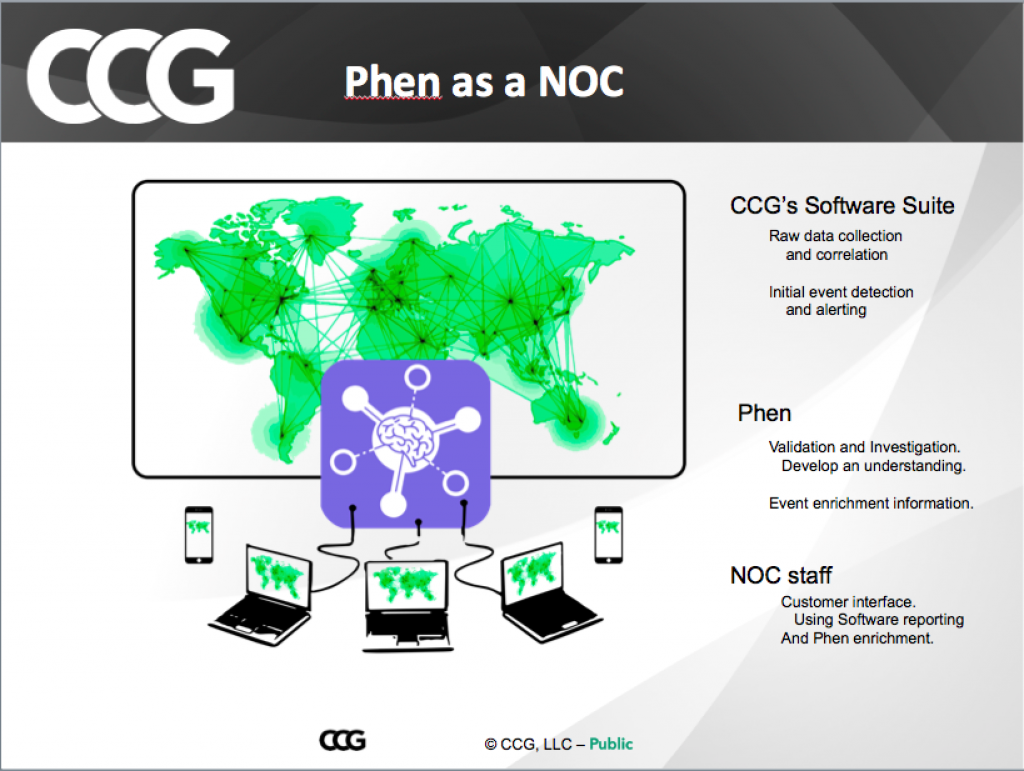
Phen as a NOC:
- Rapidly discovers critical network points.
- Tracks down and identifies fiber cuts and other service disruptions significantly faster than today’s methodologies.
- Other carriers can take as long as 20 minutes to acknowledge a network outage.
- Discovers and unravels the critical network crossroads (traffic hotspots). Discovered points are monitored, expanded, added, or removed, as Phen identifies changes in these critical network points.
CCG’s customers use our products to track problems with their carriers (e.g., Verizon, Comcast, etc).
The example below provides three network points being monitored before and after points of interest in the network. This provides accurate and specific information about outages within a dynamic network, including those caused by a customer’s carriers. Our customers use this to quickly isolate and identify carrier problems in real-time.
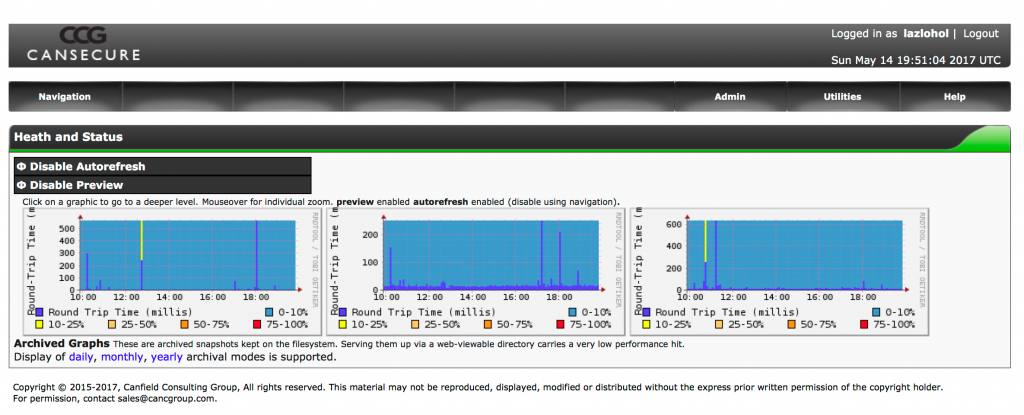
NeTERS collects internal network patters (without being given anything but the network address space to be concerned), allowing Phen to identify key “traffic exchange points” in real-time.
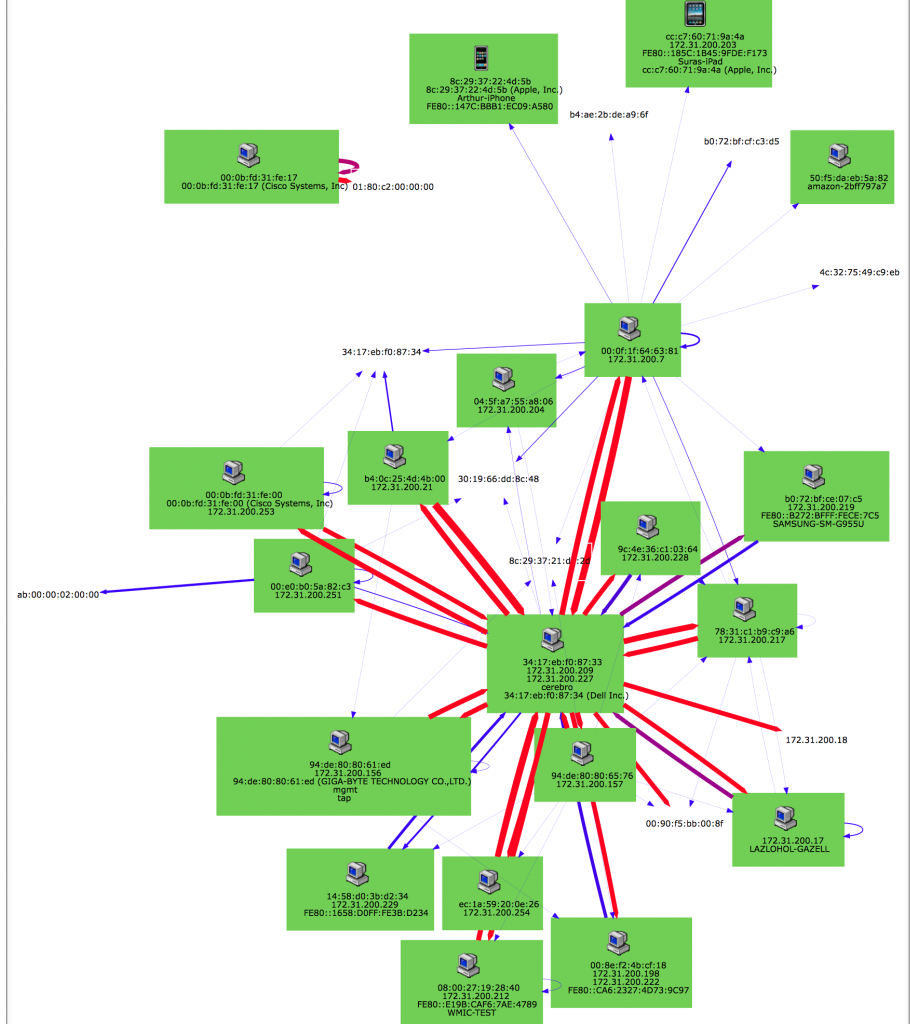
Phen builds a collection set to be monitored using these key traffic crossroad points (in this case the 227 and 17 systems), providing real-time detection of traffic breaks.
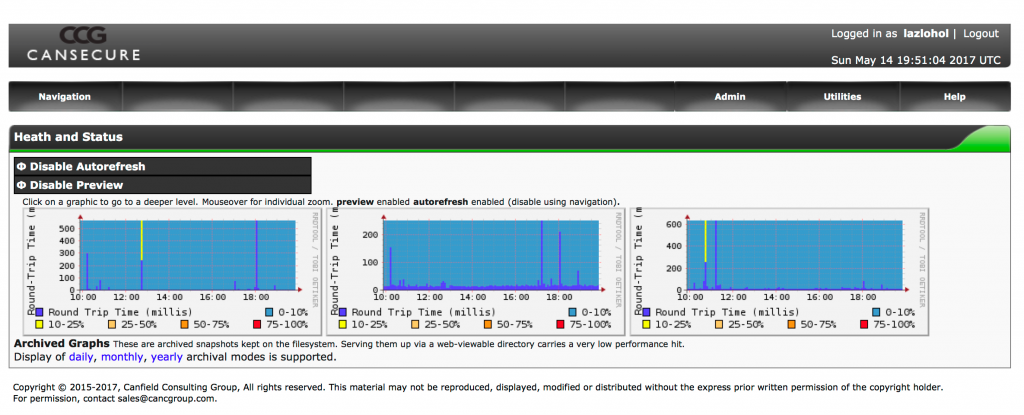
Phen Weather Monitoring
- Phen develops network-monitoring points, or points of interest, from NeTERS’ real-time traffic analysis and updated for the dynamically changing networks. This is a challenge when attempting to keep up to date in the software-defined networks (SDN) world.
- Traditional methods require targeting traffic points based on development designs that are rarely updated after release or are quickly rendered obsolete.
- Plugging Phen into the National Weather Service is beneficial due to the importance of EVERY NOC to be proactive whenever storms are in the forecast. This is especially significant to carriers with aerial fiber. When storms knock down poles and wires, this Act of God is a nightmare. The more warning the better. Phen is ideal for this.
- PaaN collects and utilizes this weather data. This provides additional targeting and possibilities for that data. PaaN presents the data in the CCG interface.
| Phen is designed to fetch METAR Reports from the National Oceanic and Atmospheric Administration (NOAA) (http://www.noaa.gov) and has access to the available weather information.NOAA provides easy access to plain text weather reports generated by a large number of weather stations (most frequently airports) worldwide. |
- Data is read and interpreted by Phen.
- Data is converted to a human-digestible format presented in the interface (see diagram below).
- The CCG Software Suite provides weather collection and results, and up-to-the-minute data when network breaks may occur.
- The targeted collection from NeTERS’ real-time network collection is also used for this process. This collection data provide exit points from the internal network to the Internet. Once these points are discovered, Phen identifies their physical location and ensures the CCG software collects weather information for that location.
- This allows Phen to correlate weather conditions to network outages and provides perspective, allowing for solutions to systems in the local network.
